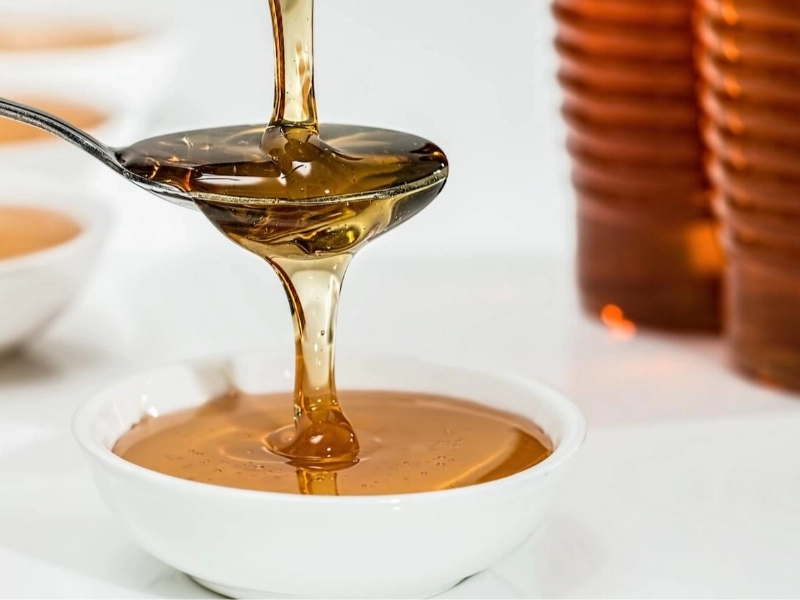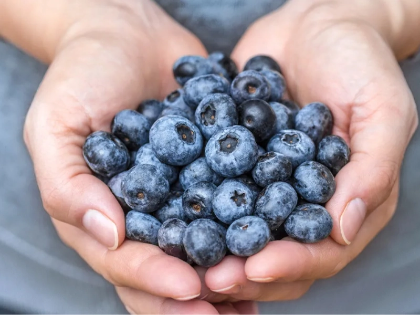Understanding the Glycemic Index of Different Honey Types
1. What is the Glycemic Index? The Glycemic Index (GI) is a ranking of carbohydrates in foods according to how they affect blood glucose levels. Foods with a high GI are rapidly digested and absorbed, causing a swift rise in blood sugar. Conversely, low-GI foods result in a gradual increase in blood sugar. Understanding the GI of foods can help individuals manage their blood sugar levels, making it particularly important for those with diabetes or those looking to maintain stable energy levels.
2. How Honey Fits into the Glycemic Index Honey is often regarded as a healthier alternative to refined sugars. However, its impact on blood sugar can vary significantly depending on the type of honey consumed. The GI of honey generally falls between 45 and 64, placing it in the medium range. This means that while honey can raise blood sugar levels, it does so at a slower rate than high-GI sweeteners like table sugar. The specific GI value of honey can be influenced by factors such as its floral source and processing methods.

 5. Factors Influencing Honey's Glycemic Index The glycemic index of honey can be influenced by several factors, including its fructose-to-glucose ratio, floral source, and processing methods. Honey with a higher fructose content tends to have a lower GI, as fructose is metabolized differently than glucose. Additionally, raw or minimally processed honey may retain more beneficial compounds, potentially affecting its overall impact on blood sugar levels.
6. Health Benefits of Honey Beyond its glycemic index, honey offers various health benefits. It is rich in antioxidants, which can help combat oxidative stress in the body. Honey also possesses antimicrobial properties, making it a natural remedy for sore throats and wound healing. Furthermore, its soothing effects can aid digestion and provide a quick source of energy, making it a popular choice among athletes.
5. Factors Influencing Honey's Glycemic Index The glycemic index of honey can be influenced by several factors, including its fructose-to-glucose ratio, floral source, and processing methods. Honey with a higher fructose content tends to have a lower GI, as fructose is metabolized differently than glucose. Additionally, raw or minimally processed honey may retain more beneficial compounds, potentially affecting its overall impact on blood sugar levels.
6. Health Benefits of Honey Beyond its glycemic index, honey offers various health benefits. It is rich in antioxidants, which can help combat oxidative stress in the body. Honey also possesses antimicrobial properties, making it a natural remedy for sore throats and wound healing. Furthermore, its soothing effects can aid digestion and provide a quick source of energy, making it a popular choice among athletes.
 7. Using Honey Wisely For those looking to incorporate honey into their diet, moderation is key. While honey can be a healthier alternative to refined sugars, it is still a form of sugar and should be consumed in reasonable amounts. Pairing honey with high-fiber foods, such as oatmeal or yogurt, can help mitigate its glycemic impact and provide sustained energy. Additionally, opting for honey varieties with lower GI values, like acacia honey, can be beneficial for blood sugar management.
8. Honey and Diabetes Management Individuals with diabetes should be particularly mindful of their carbohydrate intake, including sugars like honey. While honey may have a lower GI than some other sweeteners, it can still affect blood sugar levels. It is essential for those managing diabetes to monitor their blood sugar responses to different types of honey and adjust their diets accordingly. Consulting with a healthcare provider or nutritionist can provide personalized guidance on incorporating honey into a diabetes-friendly meal plan.
7. Using Honey Wisely For those looking to incorporate honey into their diet, moderation is key. While honey can be a healthier alternative to refined sugars, it is still a form of sugar and should be consumed in reasonable amounts. Pairing honey with high-fiber foods, such as oatmeal or yogurt, can help mitigate its glycemic impact and provide sustained energy. Additionally, opting for honey varieties with lower GI values, like acacia honey, can be beneficial for blood sugar management.
8. Honey and Diabetes Management Individuals with diabetes should be particularly mindful of their carbohydrate intake, including sugars like honey. While honey may have a lower GI than some other sweeteners, it can still affect blood sugar levels. It is essential for those managing diabetes to monitor their blood sugar responses to different types of honey and adjust their diets accordingly. Consulting with a healthcare provider or nutritionist can provide personalized guidance on incorporating honey into a diabetes-friendly meal plan.
 9. The Role of Honey in a Balanced Diet Honey can be a delightful addition to a balanced diet when used thoughtfully. It can enhance the flavor of various dishes, from teas to marinades, without the need for processed sugars. When used as a sweetener, honey can provide a unique taste profile and additional health benefits. However, it is crucial to balance honey consumption with other nutrient-dense foods to ensure overall health and well-being.
10. Summary of Honey's Glycemic Index Understanding the glycemic index of different honey types is essential for making informed dietary choices. While honey can be a healthier alternative to refined sugars, its impact on blood sugar varies depending on the type. By selecting honey with a lower GI, such as acacia honey, and using it in moderation, individuals can enjoy its benefits while maintaining stable blood sugar levels. Ultimately, honey can be part of a healthy diet when consumed wisely and in conjunction with other nutritious foods.
9. The Role of Honey in a Balanced Diet Honey can be a delightful addition to a balanced diet when used thoughtfully. It can enhance the flavor of various dishes, from teas to marinades, without the need for processed sugars. When used as a sweetener, honey can provide a unique taste profile and additional health benefits. However, it is crucial to balance honey consumption with other nutrient-dense foods to ensure overall health and well-being.
10. Summary of Honey's Glycemic Index Understanding the glycemic index of different honey types is essential for making informed dietary choices. While honey can be a healthier alternative to refined sugars, its impact on blood sugar varies depending on the type. By selecting honey with a lower GI, such as acacia honey, and using it in moderation, individuals can enjoy its benefits while maintaining stable blood sugar levels. Ultimately, honey can be part of a healthy diet when consumed wisely and in conjunction with other nutritious foods.







